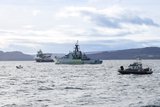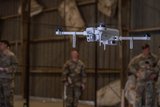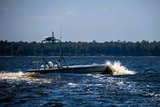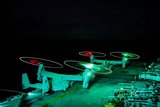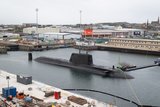Naval Warfare magazine: Aircraft carriers; European joint projects and more
What’s inside this edition:
Comment: Down, but not out
The sinking of the Russian Navy’s Black Sea flagship, although not evidence of a sea change in the naval domain, is a far cry from the pre-emptive self-sinking of Ukraine’s own flagship. Donation of increasingly advanced materiel demonstrates increased faith in Ukraine’s ability to resist the invasion.
Features include:
Vital asset or floating target? Aircraft carriers in the age of missiles
Aircraft carriers continue to be some of the most expensive and valuable tools in naval fleets. However, with the proliferation of new and advanced missiles creating A2/AD bubbles, the ships’ utility has been questioned.
MUUVing with the times: Seafloor threats drive UUV development
As concerns over seafloors becoming a new arena of warfare grow, navies are increasingly seeking systems capable of autonomous underwater operations. Companies are consequently stepping up to meet surging demand.
Enablers of power: Next-generation support ships
Behind every great navy, there is a great auxiliary. While destroyers and aircraft carriers are widely seen as the most powerful tools in a navy’s arsenal, ships that keep the fleet going are never far behind.
European joint projects: The complexities of collaboration on the old continent
Russia’s invasion of Ukraine has caused a re-evaluation of the European security landscape. The EU may politically join European nations, but its approach to defence lacks a similar unitarian approach. Shephard breaks down how and when member states work together on naval developments.
The inexorable rise of the Turkish naval industry
Turkey’s defence industry has made remarkable progress in the last few decades, being increasingly able to develop indigenous systems for domestic and international customers alike. But are these advances more evolution than revolution?
Protecting the North Atlantic: The surprise element
Russian threats of nuclear strikes on the capitals of Europe have resurfaced in the context of the invasion of Ukraine. Against this backdrop, the importance of ASW has been re-emphasised with particular focus on the North Atlantic.
Bonus content coming soon.
Read the edition here.
More from Naval Warfare
-
![US Navy starts acquisition process for uncrewed maritime systems for support missions]()
US Navy starts acquisition process for uncrewed maritime systems for support missions
The USN is interested in uncrewed capabilities that can carry out explosive ordnance disposal, mine countermeasures, force protection, ISR and anti-submarine missions.
-
![What capabilities has the US deployed in the Caribbean and South America to engage “drug boats”?]()
What capabilities has the US deployed in the Caribbean and South America to engage “drug boats”?
The US arsenal includes amphibious assault and littoral combat ships, cutters, destroyers, landing platform docks, a nuclear-powered fast attack submarine, drones, ISR aircraft, helicopters and fighters.
-
![HMS Agamemnon: details of the dive and what the Astute-class signifies for the UK Royal Navy]()
HMS Agamemnon: details of the dive and what the Astute-class signifies for the UK Royal Navy
As HMS Agamemnon moves closer towards joining the UK’s in-service submarine fleet, how does the sixth Astute-class fit into the Royal Navy’s defence strategy?
-
![French Navy frigates to align with Hellenic Navy after Aster missile enhancement]()
French Navy frigates to align with Hellenic Navy after Aster missile enhancement
The FDI frigates will have an enhanced warfare capability that matches the configuration of ships ordered by Greece.







